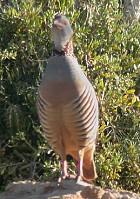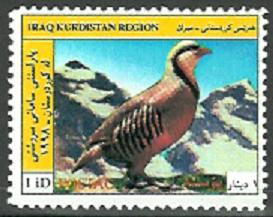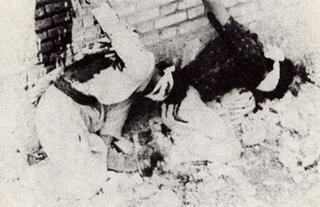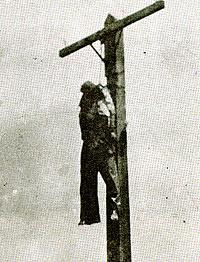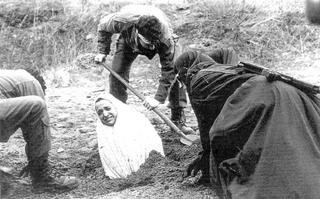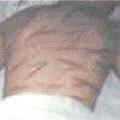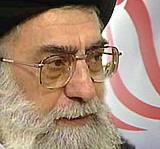Amnesty International about Iran:
"Scores of political prisoners, including prisoners of conscience, continued to serve sentences imposed in previous years following unfair trials. Scores more were arrested in 2003, often arbitrarily and many following student demonstrations. At least a dozen political prisoners arrested during the year were detained without charge, trial or regular access to their families and lawyers. Judicial authorities curtailed freedoms of expression, opinion and association, including of ethnic minorities; scores of publications were closed, Internet sites were filtered and journalists were imprisoned. At least one detainee died in custody, reportedly after being beaten. During the year the pattern of harassment of political prisoners’ family members re-emerged. At least 108 executions were carried out, including of long-term political prisoners and frequently in public. At least four prisoners were sentenced to death by stoning while at least 197 people were sentenced to be flogged and 11 were sentenced to amputation of fingers and limbs. The true numbers may have been considerably higher."
Source:
Land of terror
Iran is a country which is made up of many ethnicities. Of these nine the most commonly reffered to are the Persians, Azeri, Kurds, Arabs and Baloch because they make up larger numbers. But according to different sources, there are around 80 different ethnicities in Iran.
The problem is that most would say that Persians make up a clear majority in Iran. This is however not true. As a person with family history and family members in Eastern Kurdistan (Northwestern Iran) I can tell you that this is an overrated "fact". One would naturally think that a country that has during most of it's existence been known as "Persia" by outsiders would be majority Persian. The point is understandable - but this is a misconception.
There is a tendency by Persians too, to underestimate the Azer, Kurdish and Arab numbers - because they are all in significant numbers and can or do outnumber the Persians themselves. The Westerner can also be blamed for this generalization of the peoples of Iran. Western travellers have been "blind" to ethnic divisions and consequently thought of the Kurds, Azeris, Arabs etc. as "Persian"...
Irans population is estimated at 68,017,860 million.
Source:
Let's convert that into a round number - 70 million.
The nine largest ethnicities in Iran and their estimated in numbers and % (of 70 million):
Azeri ca. 40 % = 28 million
Persian ca. 15 % = 10,5 million
Kurd ca. 15 % = 10,5 million
Arab ca. 8 % = 5,6 million
Baloch ca. 7 % = 4,9 million
Turkic groups - (Qashqai, Turkmen etc.) ca. 5 % = 3,5 million
Mazandarani ca. 5 % = 3,5 million
Gilaki ca. 2 % = 1,4 million
Others ca. 3 % = 2,1 million
According to the Wikipedia:
Source:
Some would say that the existence of a sparatist movement/organization for the separation of a certain ethnic/religious "minority group" from the majority group, can be interpreted as a cry from the ethnic/religious "minority group" as a whole for recognition. Others would say that is a far fetched idea and that such movements/organizations only represent a little minority within the ethnic/religious "minority group". I put "..." because in the case of the Azeri which make up about 40 % of the Iranian population they are by far a majority group.
As a Kurd, I would say that I stand for a moderation of these two theories - on one side - I agree - a separatist group DOES represent a whole ethnic/religious "minority group". But I also understand that there are people within these groups that do not harbour any sepratist feelings.
However, I consider these to be individuals rather than representative of the ethnic/religious "minority group", because there wouldn't be a sepratist movement/organization within the group unless there was strong aspirations/wish for separatism within the group.
As you read from Amnesty, Islamic Republic of Iran is by far one of the most cruel regimes in the world. Myself and millions of others, both within and outside Iran, would like to see a regime change. Some advocate a peacful revolution by the people themselves as in Georgias velvet revolution and Lebanons cedar revolution. While others advocate military actions to save the people from the horrors of the regime. I belong to the latter.
I bet you wanna ask me "Do you enjoy seeing people being killed/maimed/raped?". But then I would ask you -"Is it okey for people to be killed/maimed/raped, just as long as you don't SEE/HEAR ABOUT them being killed/maimed/raped?" - Because believe me, people are being killed and maimed and raped and terrorized and have been so for the last 26 years of the Islamic Terror Regime of Iran.
Ever since the birth of this nightmare in 1979, millions have been killed, maimed, raped, prosecuted for religious, political or other beliefs.
That was 26 years of systematic oppression, torture, murder and prosecution. Now with the help of the world community the horror regime will either grow stronger or weaker. Funny how so much depends on some mindless office rats in Europe who couldn't care less for the pain and sufferings of the many ethnicities, individuals, children and women of Iran.
Claiming religious supremacy as the only true face of Islam, Iran has since the theocracy came to power, supported and financed terrorism. You will find that before the horror regime was established, there was no such thing as "terrorism" or "Islamic fundamentalism". Although they might have "existed" (in e.g. acts of terror) they were not daily words or what the common man on the street in Helsinki, Washington or Tokyo would have an oppinion about.
Indeed there were terror acts. And there have always been. But with the birth of the horror regime in Iran, terrorism exclusively became "Islamist". The word Islam - which means "submission" - has since become synonymous with "terror" for many people in the western world. How can Islam, a religion, which as Judaism and Christianity is based on the the principals of love, peace and brotherhood be affiliated with such a disgusting word?
WARNING - GRAPHIC!
Iran the birthplace of "terrorism"
And we can thank THIS man and those of his kind for such cruelty:
(Khamenei)
What to do...
So what can we do about this? Right? That is what you are thinking??? I am sure you already know what my stance is... Let me focus on your. Are you one of those "peace loving passiphists"? Well let me tell you that there is no such thing as being "passive" in this or any other case like this one - which involve a requirement of some sort of engangement for or against solution...
Because taht is what it boils down to. Solutions. We seek for the best possible
way to overcome our problems and handicaps. Either one can confront the problem or handicap and solve what there is to solve and move on knowing one has "fixed it". Or one can give up all responsibility and let nature take it's course and then deal with the consequences...
Either way, you have made a choice. A decision to overcome now or later.
That is how it is with Iran. Take out the problem now, dump it into the garbage can and get it over with. Or you can wait for the garbage can to fill up and up - and then flood your home with garbage, to the point where you are forced to make a decision and take actions...
You didn't like my metaphor? Well let me put it like this:
The Kurds in Southern Iraq were practically screaming for attention and help from the western world, but their cries went to deaf ears and obvious sufferings to blind eyes. All untill in 1991 - after an infamous genocide
campaign by Saddam called "Al-Anfal" ("Spoils of war" from the Quran) was carried out against the Kurds.
Saddam had come to the point where he started using chemical bombs against the Kurds. This desparate situation for the Kurds forced them into such a weak position that when they in 1991 rebelled with the "support" (NOT!) and encouragement of the Americans, they were left out in the cold alone at the mercy of a dictator whos cruelty matches that of Lenin and Hitler through Kurdish eyes. Fleeing from their homes by the millions - the Americans and the West were FORCED into helping the Kurds. The garbage in Iraq had flooded and the innocent women and children were as in most cases made to pay for it...
Will we sit by and let Iran be a new Iraq? Will we let another Baathist-minded fascist regime repeat the ugly face of history once more? How many more innocent women and children will be deprived of a life? How many more children will be deprived of a childhood and a decent piece of clothing on their body, a piece of bread to eat and a graduation?
Oh, what joy it is for us sitting so comforted here in Europe, America and the rest of the fortunet, peaceful part of the world knowing we never will have to face such agony and pain. We will never know what it means to be deprived of our entire family or how it feels to face another day with one aim only; to survive...
Shame on you...
How was it that you decided to retire from the world and not care about others sufferings? May not be your intenton - but your actions speak louder than your words. Either you are with the innocent and helpless or you are against them!
"Freedom Invasion"

A coalition, like the one that operates in Iraq should be established. The most ideal would be for the UN to legitimize the invasion and thus open up for a broad coalition. Below I have made a list of those prefered to be involved in the invasion of Iran. This list is more like a wish list. As is the invasion itself... Bear with me...
The Coalition of the Freedom Invasion
US
UK
South Kurdistan
Azerbaijan
Pakistan
Turkmenistan
And various others.
Reasons?
Take a look at the pictures above, what Amnesty says and take a good five minutes to make up your mind wether or not these are sufficient reasons. And also keep in mind that THERE IS NO DEMOCOCRACY IN IRAN. Women rights, religious rights, ethnic minority rights, HUMAN RIGHTS, freedom of speech do not exist in this country. We are talking about the lair of terrorism. If we don't put an end to it's production the Israeli-Palestinian issue will keep rolling on - if we don't put an end to it's work the Kurdish issue, Azeri issue and Baloch issue along with all other oppressed minorities will remain as. The choice is to either ignore and let the garbage flood or take a stance and put words into action.

Now, the reason I propose the neighbours of Iran as part of the coalition is quite obvious. It is clear that it is much easier to use Irans neighbours as bases for the invasion. And also since Southern Kurdistan, Azerbaijan, Pakistan etc would have interests in the country itself (in e.g. because there are Kurds, Azeris and Baloch in Iran). When Iran has ben successfully invaded each of those mentioned in the list above should be given command over the area that falls most natural for them. South Kurdistan should be given comend over East Kurdistan, Azerbaijan should be given comand over South Azerbaijan etc. In this way one would have taken into consideration the sensitive issues about ethnicity and religion.
Comand
One thing comes to mind; insurgents. Which would not be a big problem if Kurds are given control over Kurds, Azeris given control over Azeris, Pakistanis given control over Baloch etc. And the rumors about Iranians (or should I say Persians) being as hateful of the Americans as they are of the theocracy horror is hard to believe. Even if true - they would have won their freedom back and could choose to have another theocray if that is what the people wish. And this is the point exactly; IF THE PEOPLE WISHES SO! Not by dictatorship and force, by choice...
The result of this invasion should look like this:

Each nation would be given self-determination within a Federal Democratic Republic. Iran is 65% Shia and the rest Sunni, Bahai, Christian etc.. Kurds, Arabs and Baloch being the only major predominant Sunni groups. There are many reasons for federalism in Iran. The wish of the Kurds, Baloch, Arabs and Azeri has been made clear through their separatist organizations. They have long been oppressed by Persian culture/language but also religion - the incompatibility of Sunni Islam and Shia Islam is a reason for federal states.




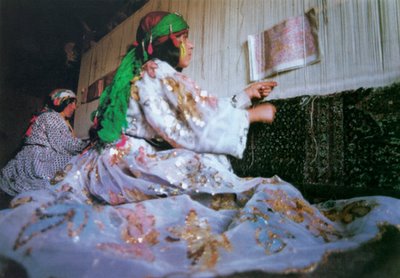


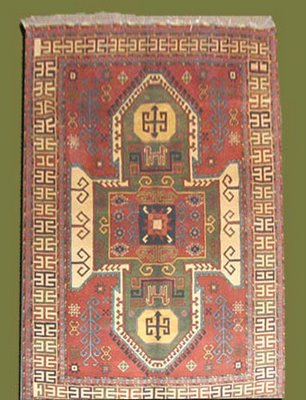


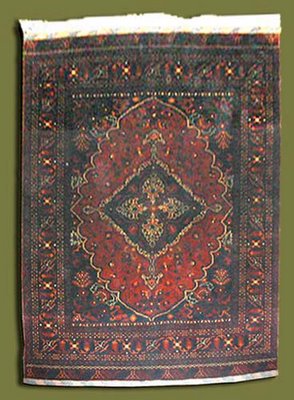
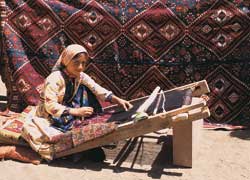
 History & Construction
History & Construction









